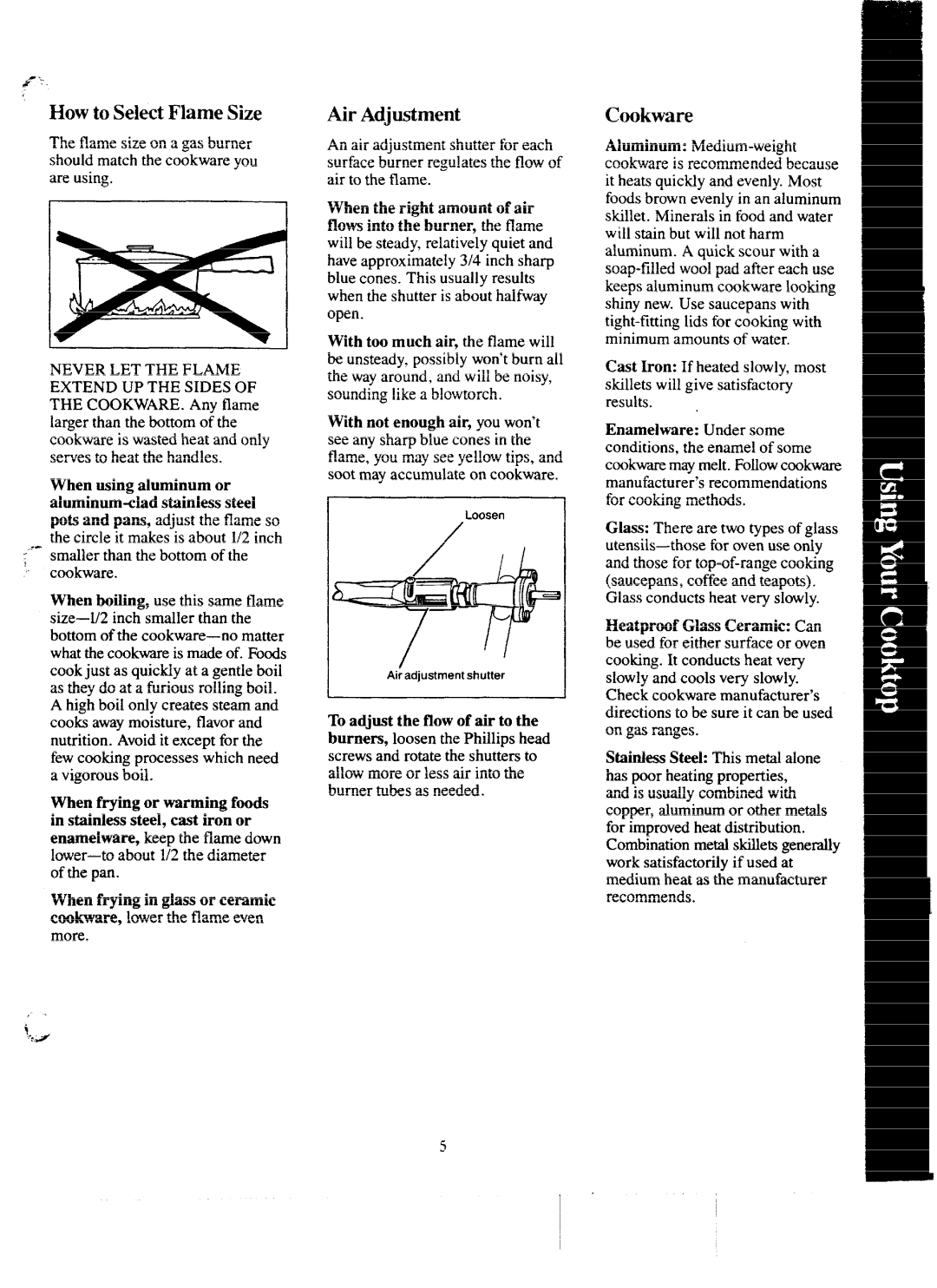JGP600AEH, JGP600EH specifications
The GE JGP600EH and JGP600AEH are modern gas cooktops that epitomize innovation and culinary excellence. Designed for both home chefs and culinary enthusiasts, these cooktops combine advanced technology with user-friendly features.One of the standout features of both models is their five sealed burners, which deliver powerful cooking performance. The ultra-high burner generates an impressive 15,000 BTUs, providing intense heat for searing and boiling, while the simmer burner, with its 5,000 BTU power, is tailored for delicate tasks such as melting chocolate or simmering sauces. The layout of the burners is thoughtfully designed to accommodate various pot sizes, making it versatile for multiple cooking styles.
Both models are equipped with the unique Precision Temperature Control, which enables users to manage heat with accuracy. This feature is essential for dishes requiring precise cooking temperatures. Additionally, the continuous grates offer a seamless cooking surface that allows pots and pans to glide effortlessly across the cooktop, promoting efficiency and ease of use.
The presence of an automatic re-ignition feature adds to the safety and convenience of these models. In the event that a flame goes out, the burners automatically reignite, ensuring a worry-free cooking experience. Furthermore, the sealed burner design prevents spills from entering the burner area, simplifying clean-up after meal preparation.
Another significant characteristic is the use of a sleek stainless steel finish, which not only enhances the aesthetic appeal but also improves durability and resistance to wear. The easy-to-clean surface combined with dishwasher-safe grates makes maintenance straightforward.
Both models are designed with user accessibility in mind. The front controls are ergonomically positioned and easy to operate, allowing cooks to adjust flames while monitoring their meals effortlessly.
In summary, the GE JGP600EH and JGP600AEH gas cooktops blend powerful performance with innovative features, ensuring a remarkable cooking experience. From the versatility of the burners to the safety aspects and user-friendly design, these cooktops are ideal for anyone looking to elevate their culinary journey. With GE’s commitment to quality and performance, these models stand out as excellent choices for any kitchen.

